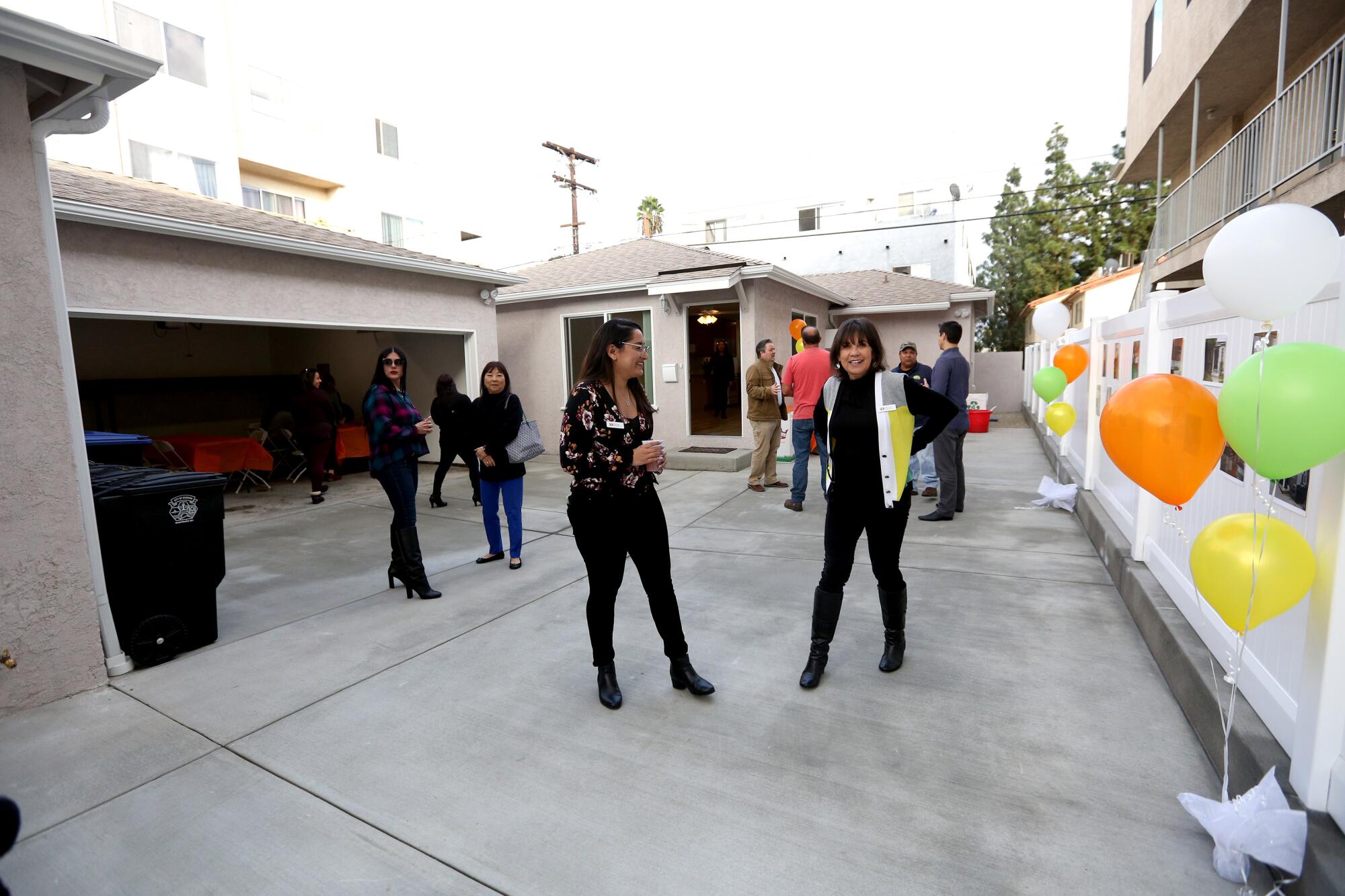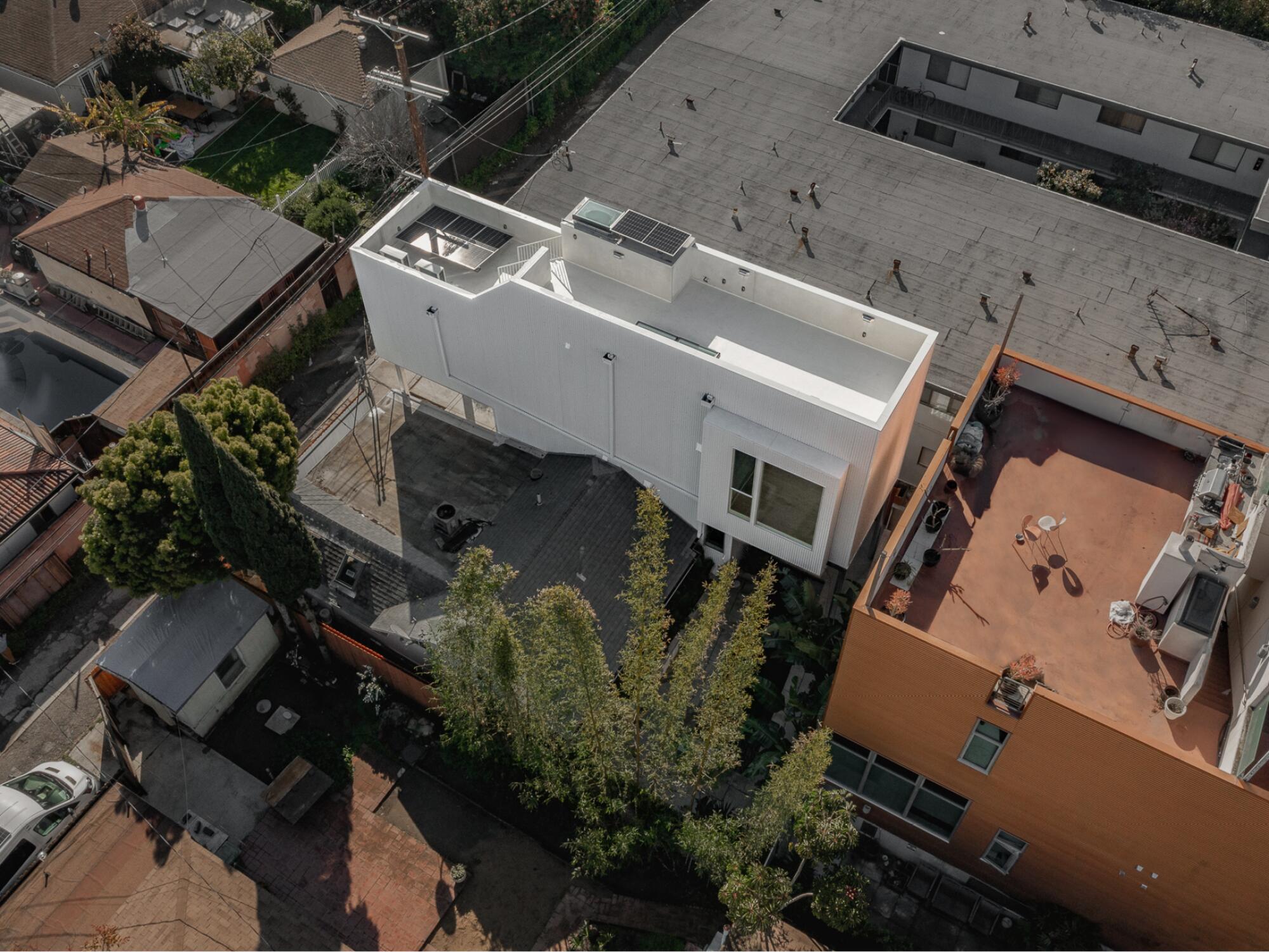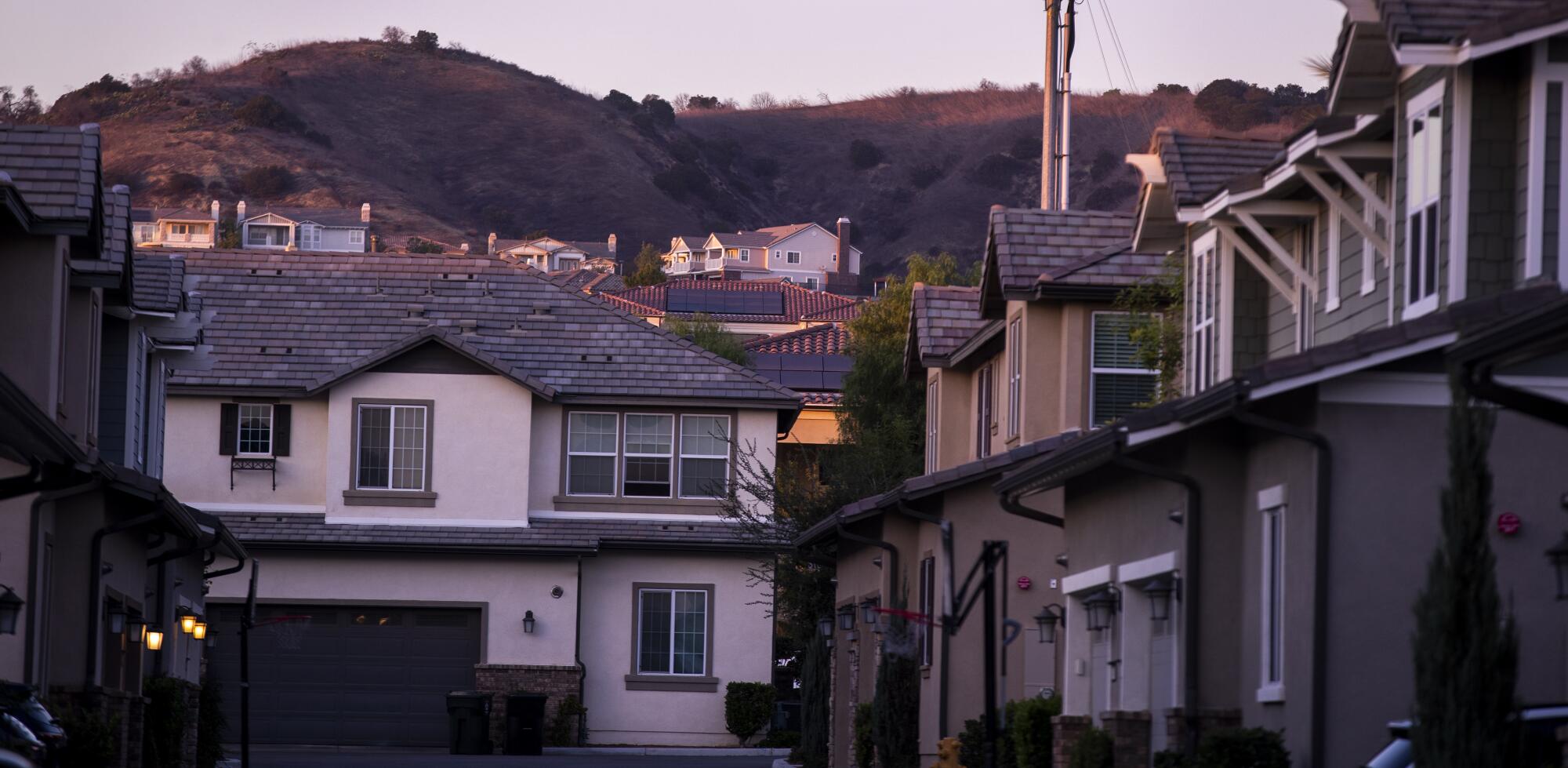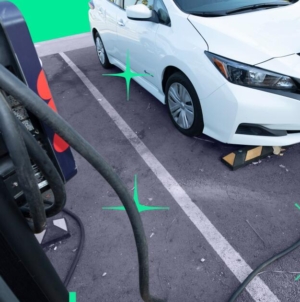-
Commentary: The state sets lofty goals in the name of a brighter future. What’s a vision and what’s a hallucination? - 26 mins ago
-
NFL Preseason Betting Odds, Picks For Dolphins-Bears, Saints-Chargers - 34 mins ago
-
Which 10 Players Have The Most Single-Game Rushing Yards in FBS History? - 43 mins ago
-
How might you reconfigure L.A. so it’s a sustainable home for everyone? - about 1 hour ago
-
DraftKings Promo Code: Get $200 Bonus For Sunday MLB, NFL Preseason Games - about 1 hour ago
-
Jaguars’ Cam Little Makes Unofficial NFL Record 70-Yard Field Goal vs. Steelers - about 1 hour ago
-
Hollywood takes a wrecking ball to Los Angeles - 2 hours ago
-
Mets Legend Named Option for Yankees to Replace Aaron Boone - 2 hours ago
-
Netanyahu says starvation claims in Gaza are exaggerated as backlash mounts over plans for new Israeli offensive - 2 hours ago
-
Fires and floods have plagued L.A. forever; brilliant marketing lured millions of newcomers anyway - 2 hours ago
Will we ever get enough housing? Here are reasons to say ‘yes’
Over the last century, L.A.’s love affair with the single-family home has created a suburban sprawl of epic proportions.
Three bedrooms. A white-picket fence. A square of grass for the barbecue.
But for many, the dream of home ownership will never be realized. Home prices have soared, wages haven’t kept pace, and more than half of L.A. residents rent their home. What’s more, the fires in Altadena and Pacific Palisades earlier this year destroyed thousands of homes, sending droves of homeowners scrambling back into the rental market.

Los Angeles knows how to weather a crisis — or two or three. Angelenos are tapping into that resilience, striving to build a city for everyone.
The Los Angeles City Council has given final approval to a sweeping rezoning plan to meet state-mandated housing goals, clearing the path for an additional 255,000 homes to be built. But single-family zones will be left largely untouched; the new housing will be developed along commercial corridors and existing dense residential neighborhoods. In the meantime, some municipalities are fighting the state’s housing mandates.

A two-story ADU shares a lot with a 1916 Craftsman bungalow.
(Yoshi Makino)
Market fluctuations and legislative uncertainty make predictions challenging. But some observers believe that by 2050, the fate of L.A.’s housing stock will be decided by one of two competing ideologies:
One of them is associated with many corporate landlords and investment firms, which buy up increasing shares of homes and rent them out to tenants. If they prevail, it’s likely that 2050 will look the same as it does now, only the chasm between the rich and the poor will grow. Home prices will keep rising, as will L.A.’s percentage of renters, according to Tiena Johnson Hall, general manager of the L.A. Housing Department.
The other view comes from a coalition of policymakers, nonprofits and aspiring homeowners who are hoping for a future where L.A.’s homes are within reach of its working class, and properties are owned by the people who live in them.
Their shared vision looks like this: Denser neighborhoods. Smaller homes, some modular or 3-D-printed. Properties co-owned by friend groups instead of just families. ADUs in backyards across the city, many of them separated from their original properties and bought and sold as separate homes.
L.A. County Assessor Jeff Prang, who points out that people commute to L.A. from Santa Clarita, Palmdale, Lancaster and Riverside, believes people will start moving closer to the city.
“People don’t want to live 40 miles away from L.A. and slog through two hours of traffic every day. It affects their quality of life,” Prang said. “The answer is to increase density, upzone areas and allow multifamily housing.”
But he doesn’t see the battle between the state and local governments (and HOAs that hope to keep things the way they are) ending any time soon.

The Burbank Housing Corp. held an open house to show an affordable housing project called the Fairview Cottages in Burbank. There are three single-family homes on the property.
(Raul Roa / Los Angeles Times)
Sacramento has a few tools at its disposal, including what is colloquially known as builder’s remedy, a penalty for cities that don’t adequately plan for California’s inevitable population increase. California cities are required to produce a housing plan every eight years that brings zoning for additional housing. If they fall far enough behind on that plan, developers in those cities can essentially ignore local zoning restrictions and build whatever they want, as long as the project includes a handful of affordable housing units.
A handful of cities have fallen behind on their plans, and developers capitalized, getting the green light for high-density projects that wouldn’t be approved otherwise.
Currently, housing element laws only require cities to plan and zone for additional housing. But Prang said by 2050, the state could go further, forcing cities to permit and encourage housing construction and punishing those that don’t.

A drone shot shows a two-story ADU, which rests an inch from a 1920s bungalow and five feet from a 1990s duplex and a few feet from a dingbat apartment to the south.
(Steve King Architectural Imaging)
The most important tool for shaping the future of L.A. housing may very well be Senate Bill 9, which makes it easier for California homeowners and developers to add density by splitting single-family lots in half and building duplexes, townhouses and ADUs.
Thanks to a handful of bills that make ADUs easier and faster to build, Prang said ADU applications have skyrocketed since the law passed in 2021, and his office spends around 40% of its time processing them. Many applications this year have come from fire victims looking to build ADUs quickly to live in while they rebuild their homes.
Today, building takes time. There are a dozen governmental agencies involved, and projects get mired in red tape. But Prang said by 2050, he expects there to be a single portal that consolidates all the applications and checkpoints required, so new developments can be green-lit in weeks or months, not years.
L.A., where 72% of residential land is zoned for single-family use, is also looking to Measure ULA to help mitigate its housing woes. The measure, which took affect in 2023 and brings a transfer tax to property sales above $5 million, has already raised more than $660 million for housing and homelessness initiatives.
It’s a polarizing policy. A recent analysis from UCLA’s Lewis Center for Regional Policy Studies — titled “The Unintended Consequences of Measure ULA” — suggests the tax has chilled a once-robust market in L.A., while sales above $5 million have remained steady in other markets across L.A. County not affected by the tax. But by 2050, Measure ULA will likely have raised tens of billions of dollars — an unprecedented amount of cash that, if used effectively, has the potential to solve many of the cities housing woes.
“We’ll use those funds to bring housing to market faster and look at creative models for home-ownership — things we haven’t been able to do for lack of funding,” said Johnson Hall, whose Housing Department oversees Measure ULA.

Three- and four-bedroom townhomes mix with single-family homes in the background in Yorba Linda.
(Allen J. Schaben / Los Angeles Times)
“Other cities are grabbing our youth. Seattle and Denver offer more affordable homes with walkable amenities,” Johnson Hall said. “Our economy is dependent on giving those 20- to 30-somethings a reason to stay here.”

Real estate agent Christopher Stanley is all too familiar with L.A.’s grueling application process for building, rebuilding, or even remodeling. He specializes in tenancy-in-common properties, a form of possession where residents share ownership of a property.
The TIC model often comes in the form of developers replacing single-family homes with townhouses, splitting one house into two. Stanley said there’s plenty of demand for it, since the price-per-square-foot typically runs about 25% less than single-family properties, but the lengthy permitting process makes it unattractive for many developers.
By 2050, Stanley said AI could make the permitting process so quick and painless that not only house-flippers and developers, but also individual homeowners, could add density to their neighborhoods. Single-family homes become duplexes. Empty backyards become lots for ADUs.

A 650-square-foot ADU behind an 1890 home in Los Angeles.
(Myung J. Chun / Los Angeles Times)
“It’s the easiest way to get affordable housing stock onto the market,” Stanley said. “But changing the laws will be crucial.”
For Stanley, the biggest boost would come if more cities allow ADUs to be sold as separate properties, not just rented — a trend that has already caught on up the coast in Oregon and Washington. California’s Assembly Bill 1033 allows such sales, but cities have to opt-in. San Jose was the first in 2024, and a few Bay Area cities followed. But Southern California, a region that has grown accustomed to the single-family lifestyle, hasn’t been as eager to adopt the idea.
“If we want more people owning their homes instead of renting, we have to make ADUs something you can buy,” he said.
In 2016, Stanley said, he sold a 900-square-foot tiny house in Boyle Heights to a 31-year-old for $375,000. The buyer used it as a way into the market, and three years later, they sold it for $515,000 and upgraded to a bigger mid-century home in Mount Washington. He said if prices and wages continue the way they’re going, ADUs and tiny homes will be the easiest way into the market for young people.
“They’re a jumping off point. It’s the quickest way to stop paying your landlord’s mortgage and start paying your own,” he said. “It’ll be happening a lot more by 2050.”
Homes won’t be the only things changing in 25 years. The people filling them will, too.
The 20th century saw the rise of the nuclear family, and most homes were bought and occupied by parents and their children. But these days, young people are waiting to get married — if they’re getting married at all — and not having as many children.
Combine that with their inability to afford a home in the first place, and we’ll soon see the rise of co-buying: Groups of friends going in on a Silver Lake bungalow. Two families splitting an Eagle Rock Craftsman. Parents purchasing a Mid-City property along with their adult children.

An aerial view of Valencia. A vertical city may tempt people from the suburbs who no longer have the dream of a single-family home.
(Robert Gauthier / Los Angeles Times)
Matt Holmes is the chief executive of CoBuy, a company that helps groups of people co-buy homes and collectively manage the property. He said California is its biggest market due to the price of homes outpacing wages across the state.
The company’s data don’t go back that far, but in 2023, a CoBuy survey found that roughly 27% of U.S. home sales were bought by co-buyers — groups beyond married couples. The same year, data from the National Assn. of Realtors showed that co-buyers made up a bit less of the market for first-time homebuyers at roughly 19%. Either way, it’s a big hike from a few decades ago, when the trend was virtually nonexistent.
“It’s an expedited path to home ownership, and it helps people gain access to a broader swath of housing stock beyond just starter homes,” he said.
Holmes co-founded the company with his mother a decade ago. Over the last year and a half, he said, friend groups have taken over family groups as his biggest clients.

If neighborhoods get denser, homes get smaller, and shared homes become more common, one factor often associated with single-family homes will be up in the air. What happens when all you can afford is a cramped 500-square-foot ADU? Or the grassy backyard where your dog used to run around is replaced by a two-story townhouse?
Angelenos will probably spend more time outside the house in 2050. As a result, parks and communal spaces will become not just a want, but a need.

An ADU in South Pasadena.
(Genaro Molina / Los Angeles Times)
“In Los Angeles, our parks include everything from neighborhood recreation centers and open spaces to theaters, beaches, lakes, aquariums, equestrian centers, golf courses, historic homes and gardens. They are the shared treasures of our community,” said Lindsey Kozberg, executive director of the Los Angeles Parks Foundation, a nonprofit that formed in 2008 as a response to budget cuts to park programs during the recession.
Kozberg said parks funding could be in danger once again, given the nearly $1-billion budget shortfall the city is facing. If the trend continues, by 2050, it’ll likely require a mix of philanthropic funding and community partnerships to make sure every Angeleno has a safe and accessible park to visit.
“There are more than 500 parks across the city alone, and they encompass a wild and wonderful collection of spaces,” she said.
By 2050, the city could have even more by simply rethinking spaces that already exist. Kozberg suggested converting neighborhood schoolyards into public parks on nights and weekends — a cost-effective option since the city wouldn’t have to build anything new.
Jordan Lang, president of McCourt Partners, said gathering places have become so much more important in the age of the internet, and investing in them is vital to the growth of the city.
Lang serves as president of Aerial Rapid Transit Technologies, the limited liability company behind the controversial proposed gondola system that would take baseball fans from Union Station to Dodger Stadium. The aerial transportation hasn’t been approved, as the environmental impact report needs sign-off from a handful of government agencies.
“This is a test case of what we can do in L.A.,” Lang said, adding that it would also serve nearby Elysian Park, getting people out of their cars and into green spaces.
By 2050, he envisions massive, well-funded parks and public spaces filled with people both day and night. Such spaces will be inviting, constantly programmed with community events, and easy to get to via public transportation.
“L.A. is an incredible place to live,” Lang said. “People will keep moving here. We need to create a city that makes them want to stay.”
Source link































